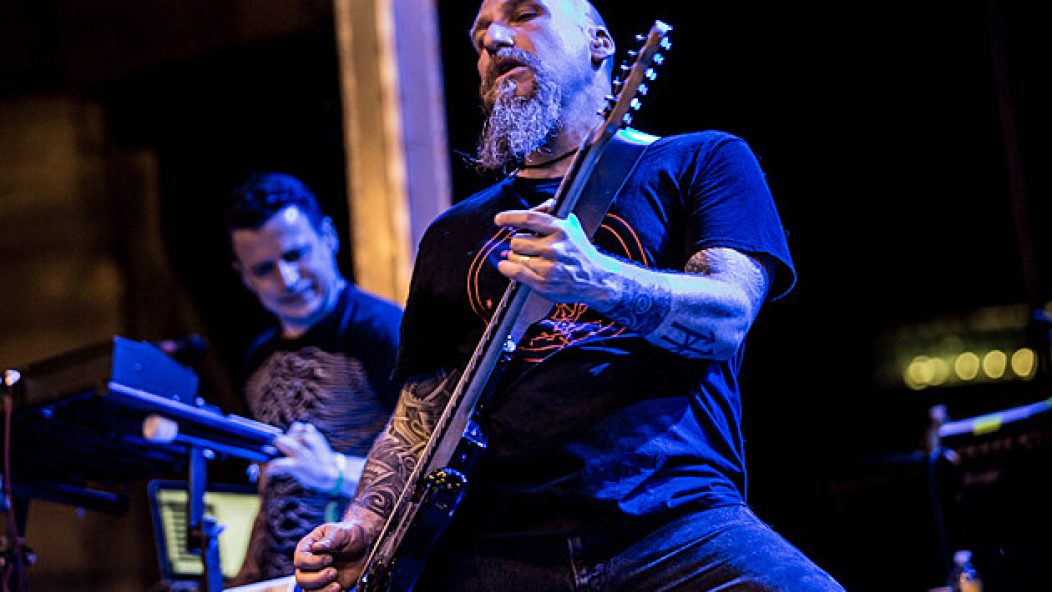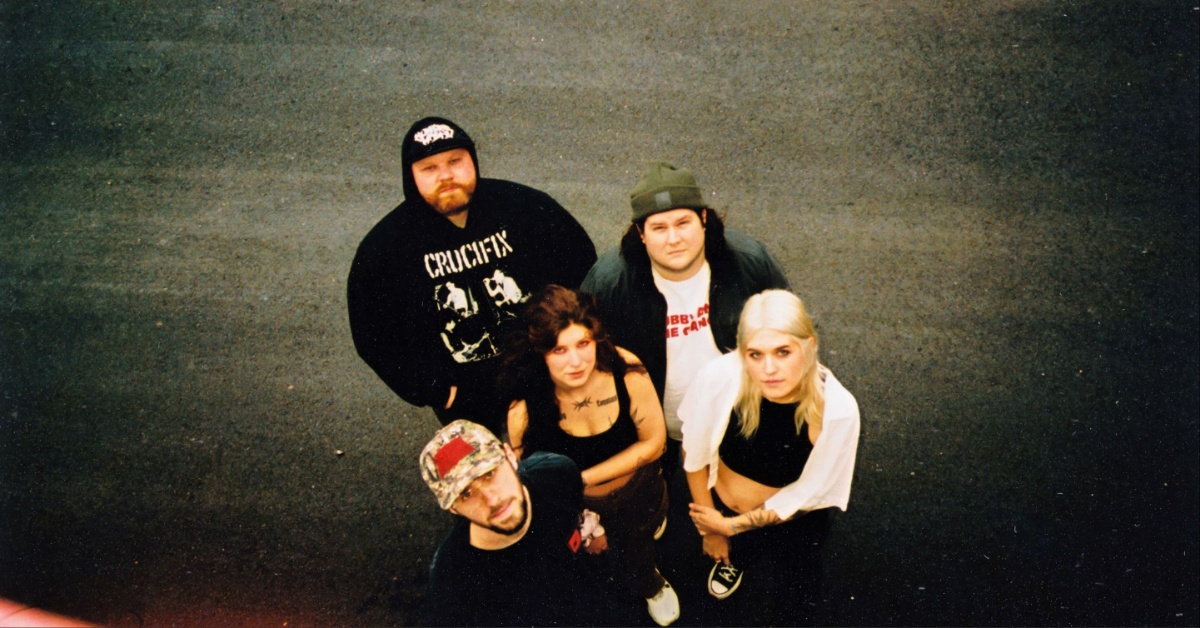
Honor Found in Delay Pedals: The Bands That Learned From Neurosis

Photo By Levan TK
…
Veteran post-metal act, Neurosis have announced Strength & Vision, an extensive career-spanning limited edition boxset, as well as a handful of live performances including an appearance at Roadburn Fest in April as part of an on-going celebration of the band’s 30th anniversary in 2016. It’s a celebration that we have been revisiting often recently—Neurosis are an organizing principle on this site—but also a fairly singular event in modern metal history. That is to say, a rare opportunity to peacefully reflect on the career of a rare, universally-acclaimed band and examine not just their recorded output but what has resulted from that output.
For a band that has toured very little over the last decade and has generally avoided self-congratulation, this celebration feels like a significant gesture. Neurosis have made a point of their self-reliance; singer Steve Von Till runs the record label that released the band’s last three albums, all of which were recorded with infamously no frills/no bullshit producer Steve Albini. All members of the band are candid about the day jobs they work in order maintain the band’s independence. This suggests that Neurosis would continue to be Neurosis regardless of their audience.
Over the three decades of Neurosis’s career, that audience has included plenty of other active musicians. Their influence can be spotted across a surprisingly wide variety of heavy music, from some of the most successful metal acts of the last 10 years to fringe christian hardcore bands. They are probably most closely associated with the glut of “NeurIsis” post-metal bands that showed up in the mid aughts, but they mostly function as a spiritual predecessor to those bands than a direct stylistic antecedent. It’s entirely possible to listen to a few Godspeed You! Black Emperor records, stock up on delay pedals and end up with a close approximation of the NeurIsis aesthetic without actually getting anywhere near the territory of Enemy Of The Sun. Neurosis’s place in metal history has as much to do with the breadth of their influence as it does with the depth of their catalog, and tracing that influence helps illustrate both the band’s impact and the singularity of their vision.
…
…
The most visible advocates for Neurosis in the metal mainstream have been the members of Mastodon. The band has featured Neurosis vocalist Scott Kelly on their last five albums, often over pieces of music that feel particularly indebted to Kelly’s body of work. The verses that Kelly sings on “Crack The Skye” lurch in syncopation against a steady and rolling rhythm, a common trick given a twist by replacing the toms with a more conventional double bass pattern. No such twist occurs on “Crystal Skull,” Mastodon’s most-performed song, where drummer Brann Dailor goes straight to his floor toms in a spot on Jason Roeder impression. These guest spots have several benefits. First and foremost, Kelly’s presence invariable improves the songs he appears on. Kelly’s voice is a commanding instrument in any context, and it has a way of cutting through Mastodon’s clutter. Though Troy Sanders and Brent Hinds are from the same stylistic lineage as Kelly—his bellow provides the right amount of contrast the keep the material from getting stale. The very basis of Mastodon’s duel singer approach (with rare appearances from guitarist Bill Kelliher) is a close fit for the two-part attack of Kelly and Von Till (with even rarer appearances from bassist Dave Edwardson).
Mastodon’s continued hospitality towards Kelly also helps tie them to their sludgy roots, maintaining a creative through-line even as they become increasingly accessible to hard rock radio. Scott Kelly anchors them and grants their music with an air of authenticity in the same way that a guest verse from George Clinton gives a Kendrick Lamar song more historical weight.
…
…
Mastodon are far from the only mainstream metal act to draw from Neurosis. Though they are far less explicit about it, Slipknot have a fair share of Through Silver In Blood’s claustrophobic din in their DNA. That record was Neurosis at their most maximalist, piling countless percussion tracks, found samples and industrial programing atop their already dense playing to create a hellish cacophony. Slipknot’s Iowa has the reputation of being a similarly demanding listen, mostly for it’s unrelenting nü-ness. But the record’s title track uses Slipknot’s triple-drummer line up to surprisingly Neurotic ends. Instead of pummeling the listener into submission at the first opportunity, Slipknot’s tom-heavy percussion is used to sustain tension over 15 minutes against a backdrop of unsettling samples and hypnotically repetitive low end. Corey Taylor’s “sexually charged serial killer” shtick keeps “Iowa” in Slipknot’s comfort zone. It is a compelling take on Neurosis’s sound, albeit more Chuck Palahniuk than Cormac McCarthy.
…
…
More mainstream acts are only the tip of the iceberg. As aforementioned, underneath the surface lies a vast congregation of bands that treat the Neurosis discography as their central text. Along with Isis, Neurosis have served as the basis for the sound of post-metal. Most of these bands take more from Isis, not surprising considering that band’s sense of melody and tone is much easier to emulate, but the stark dynamics and deliberate pacing of the last decade of Neurosis records cast a long shadow over the genre.
For Josh Graham, that shadow has been hospitable. Graham served as Neurosis’s resident visual artist from 2000 to 2012, so it is no real surprise that his work as a musician in A Storm Of Light and Battle Of Mice feel of a piece to the sounds he was tasked with complimenting. But even beyond their direct collaborators, specific elements of Neurosis’s style can be heard across the board in post-metal. Mouth Of The Architect, who employ a similar dual vocal approach, feel particularly indebted at their heaviest moments.
…
…
Sometimes spotting the resemblance between Neurosis and their progeny requires some squinting. Ulcerate are a death metal band from the tradition of hyper technical and meticulously composed bands like Gorguts, a far cry from Neurosis’s punk origins. But when they ease off the tremolo picking and blast beats, Ulcerate’s quieter moments could fit in easily alongside A Sun That Never Sets deep cuts. They have a sense of restraint uncommon to the tech death scene. The way that they hang on to small clusters of dissonant notes before launching into their full strength attack is a trick that aligns them as much with Scott Kelly and Steve Von Till as it does with Luc Lemay.
…
…
Although generally considered to be a metal band in their current form, at the start of their career Neurosis were much closer to hardcore punk. The simplistic and often sloppy writing on Pain Of Mind and The Word As Law are almost wholly unrecognizable next to the music Neurosis were making even three years later. But by evolving beyond their roots, Neurosis presented other hardcore bands with a new wealth of sounds to draw from. This is how you end up with a christian metalcore act like Zao putting out a record like LIberate Te Ex Inferis. If Neurosis function like a psychological horror film, than Liberate Te Ex Inferis is a slasher flick. Zao transmuted the creeping dread of Through Silver In Blood into a series of terrifying jump scares, losing little potency in the process.
…
…
Neurosis may not have many ties left to hardcore punk in sound, but they have carried the genre’s DIY ethos with them throughout their career. By establishing themselves through years of relentless touring, Neurosis have earned themselves the clout to remain one of the biggest names in underground heavy music on their own terms. Though it’s doubtful that they were ever in danger of being swallowed up by the machinery of the music industry, the band has taken every chance to gain more control and autonomy over their work and image and any concessions to outside forces, like a short lived Scion sponsorship, feel like they happen after careful deliberation.
In this respect their closest analogue in the hardcore world is fellow Roadburn headliner Converge. Like Neurosis, Converge have maintained a huge presence in the underground music scene while also being largely self-sufficient. Converge have recorded their last four albums with their guitarist Kurt Ballou and their singer Jacob Bannon does nearly all of the band’s art and graphic design. They also enjoy a symbiotic relationship with Bannon’s Deathwish Inc label, which they use as a farm system for touring partners and as a home for their minor releases. What Converge share with Neurosis isn’t a proclivity for drop A tuning or dirge-like tempos (though they aren’t averse to getting their sludge on) but a dedication to craftsmanship. Both Converge and Neurosis are dedicated to seeing their art through every stage of its development, and are aware of the workload that this approach requires. Both are models of sustainability in a field littered with the wreckage of burnouts.
…










